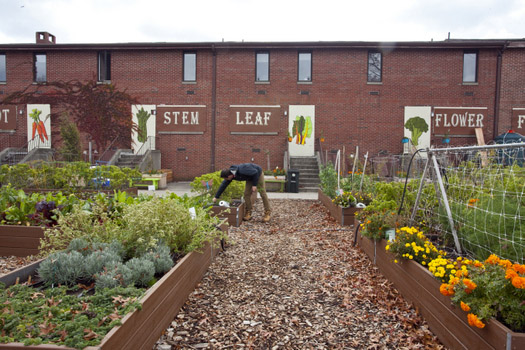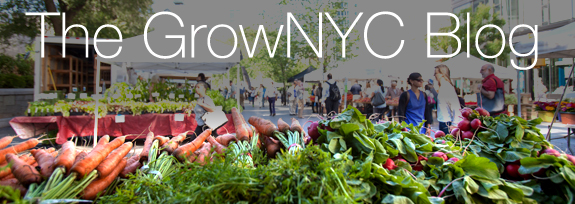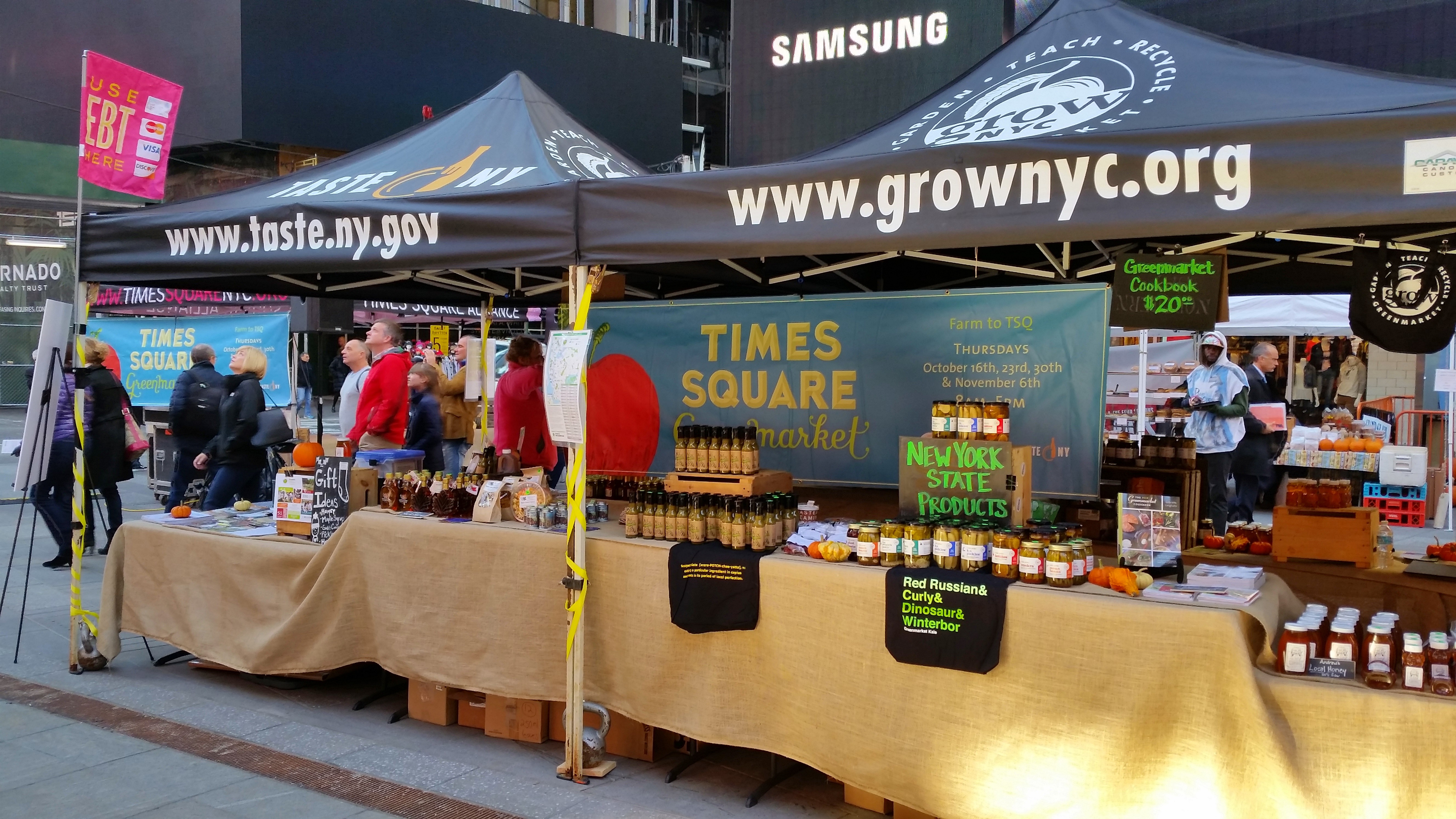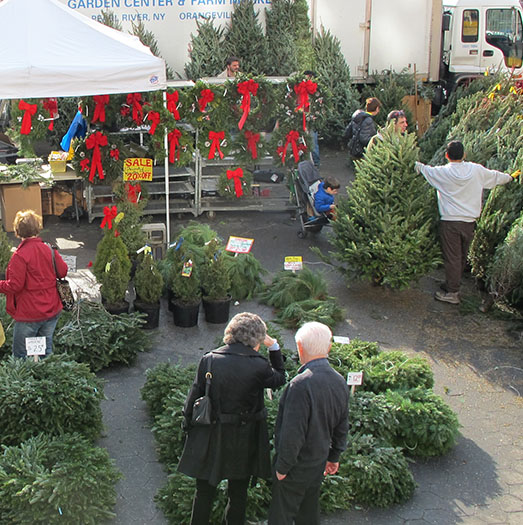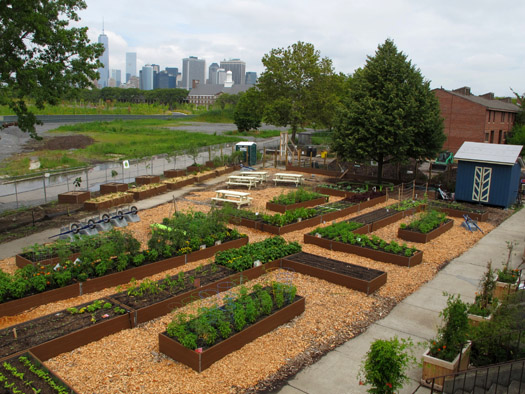
During our inaugural season, GrowNYC's Governors Island Teaching Garden, a dedicated multi-use learning and demonstration garden space within Governors Island Urban Farm, hosted 16 weeks of garden-based educational programming and skill-building workshops for 4500 school children, school and community gardeners, summer camps, and members of the public.
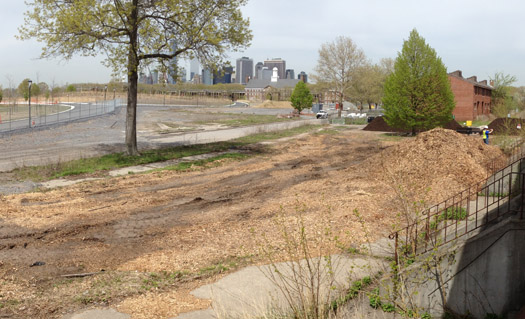
During the Fall 2014 school semester, the Teaching Garden provided 500 NYC public school students (K-12) the opportunity to dig in and connect to nature through urban agriculture, environmental education, and nutritional learning, by growing, harvesting, cooking, and eating farm-fresh produce. Students engaged in in-depth discussions of plant care, ecosystems, food justice, and healthy living.
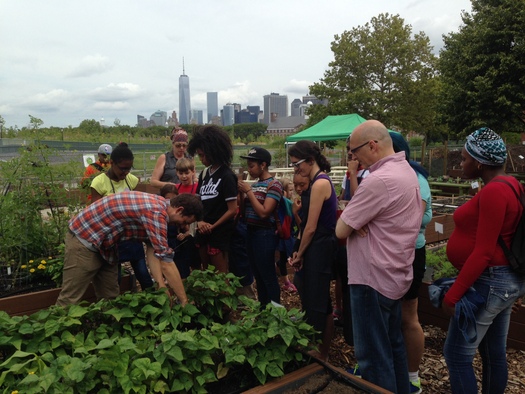
Students also had the opportunity to make a healthy snack or beverage on the bicycle blender! Along with a range of public schools from all five boroughs, we had the honor of providing programming to some very special groups such as Lighthouse Guild, Administration for Children’s Services (ACS), and Rush Philanthropic. We also had the privilege of having GrowNYC’s own Mike Zamm come out one day to work with High School students making solar ovens.
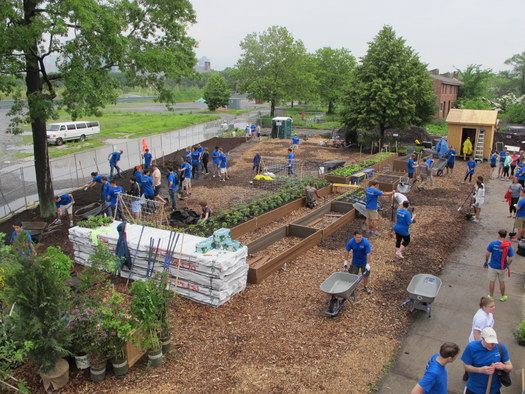
In addition to hosting visiting school age students, the Teaching Garden was also open to the public during summer weekends. During these weekend open hours, 3,600 public visitors were able to take a self-guided tour of the space, drop-in on scheduled structured gardening activities, or taste produce from the garden during cooking demos. These activities included garden maintenance, (weeding, mulching, planting), harvesting, tours, and other hands-on arts activities.
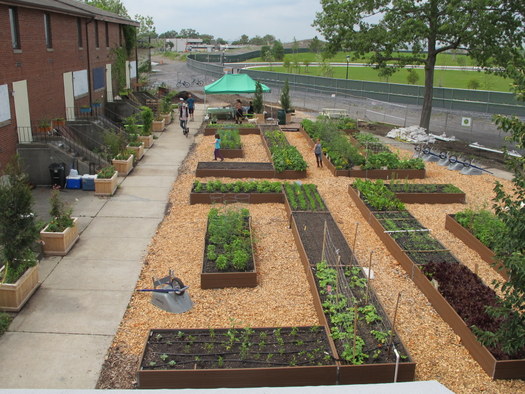
On selected weekends during the summer, the Teaching Garden also hosted specific workshops and activities, include ones on animal care, making herbal teas, building trellising for peas, and vertical pallet garden construction. Weekend visitors were also able to see demonstrations of many of the garden and greening infrastructure elements that GrowNYC has built in the past three decades throughout the city. These included raised plastic lumber frame beds for edibles, ornamentals, and themed gardens; windrows for urban agricultural production; a shade structure; a rainwater harvesting system; a garden shed; mulched paths; easy to construct benches; fruit trees; season extending high- and low-tunnels; cold-frames; composting bins; recycling bins; a rain garden; stoop railing planters; and examples of enhanced tree pits for homes, gardens, and communities.

In total, the Teaching Garden produced a bounty of fruits, vegetables, and herbs -- much of it grown by children – totaling over 800 pounds. Most of this produce was harvested, cooked, and consumed by visiting school groups as part of Teaching Garden’s educational programming. Leftover produce was donated to city food pantries.
